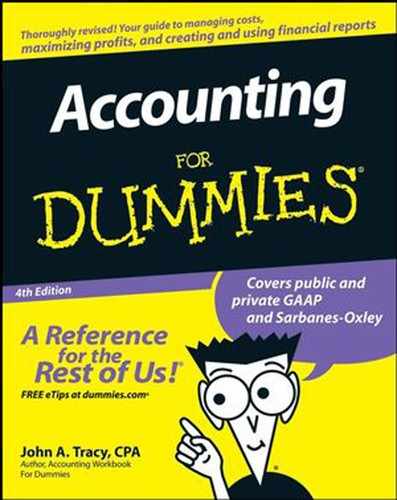7.4. Recording Inventory Losses under the Lower of Cost or Market (LCM) Rule
Acquiring and holding an inventory of products involves certain unavoidable economic risks:
Deterioration, damage, and theft risk: Some products are perishable or otherwise deteriorate over time, which may be accelerated under certain conditions that are not under the control of the business (such as the air conditioning going on the blink). Most products are subject to damage when they're handled, stored, and moved (for example when the forklift operator misses the slots in the pallet and punctures the container). Products may be stolen (by employees and outsiders).
Replacement cost risk: After you purchase or manufacture a product, its replacement cost may drop permanently below the amount you paid (which usually also affects the amount you can charge customers for the products).
Sales demand risk: Demand for a product may drop off permanently, forcing you to sell the products below cost just to get rid of them.
Regardless of which method a business uses to record cost of goods sold and inventory cost, it should apply the lower of cost or market (LCM) test to inventory. A business should regularly inspect its inventory very carefully to determine loss due to theft, damage, and deterioration. And the business should go through the LCM routine at least once a year, usually near or at year-end. The process consists of comparing the cost of every product in inventory — meaning the cost that's recorded for each product in the inventory asset account according to the FIFO or LIFO method (or whichever method the company uses) — with two benchmark values:
The product's current replacement cost (how much the business would pay to obtain the same product right now)
The product's net realizable value (how much the business can sell the product for)
If a product's cost on the books is higher than either of these two benchmark values, an accounting entry is made to decrease product cost to the lower of the two. In other words, inventory losses are recognized now rather than later, when the products are sold. The drop in the replacement cost or sales value of the product should be recorded now, on the theory that it's better to take your medicine now than to put it off. Also, the inventory cost value on the balance sheet is more conservative because inventory is reported at a lower cost value.
Determining current replacement cost values for every product in your inventory isn't easy! When I worked for a CPA firm many years ago, we tested the ways clients applied the LCM method to their ending inventories. I was surprised by how hard it was to pin down current market values — vendors wouldn't quote current prices or had gone out of business, prices bounced around from day to day, suppliers offered special promotions that confused matters, and on and on. Applying the LCM test leaves much room for interpretation.
|
